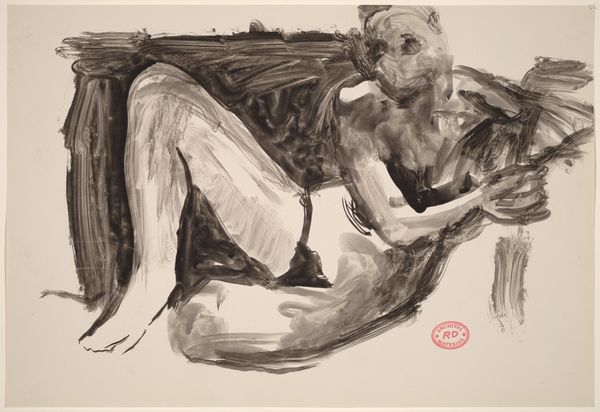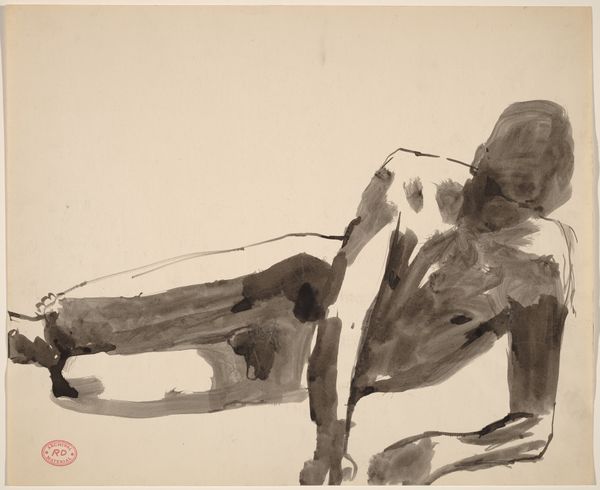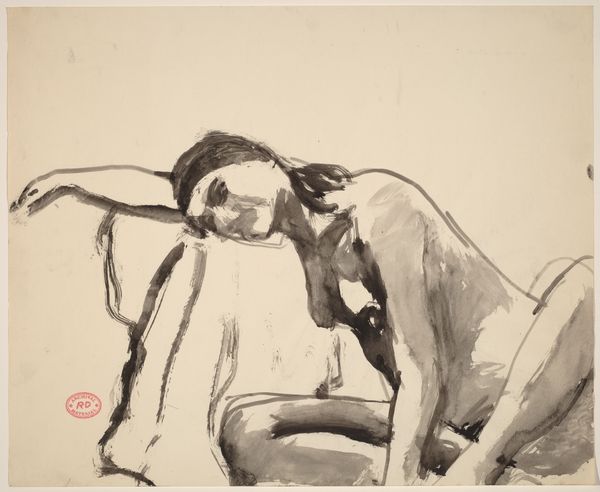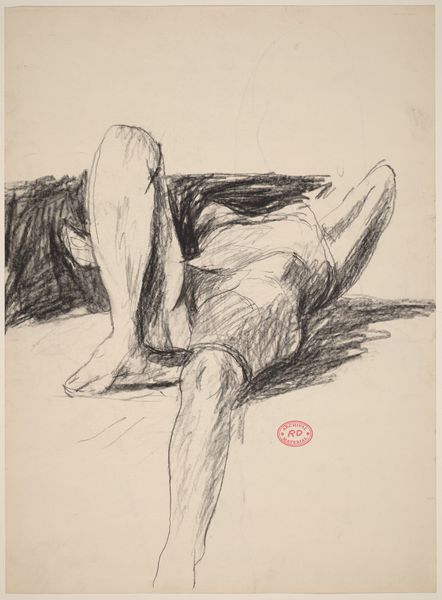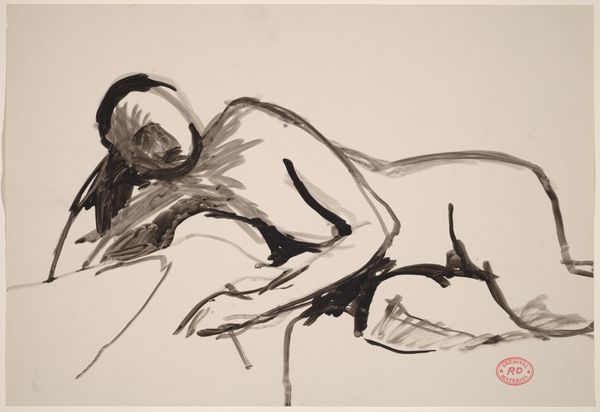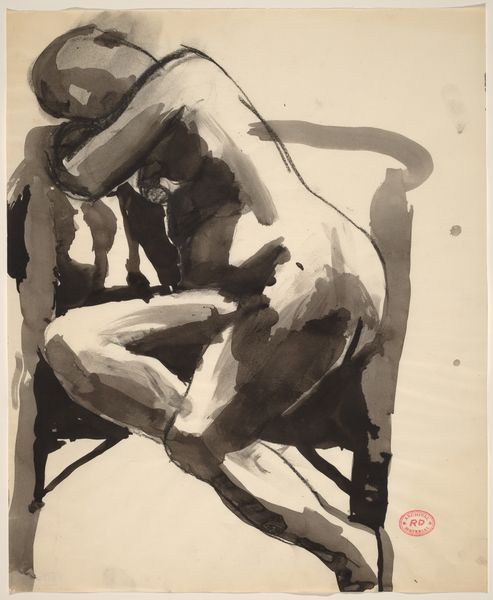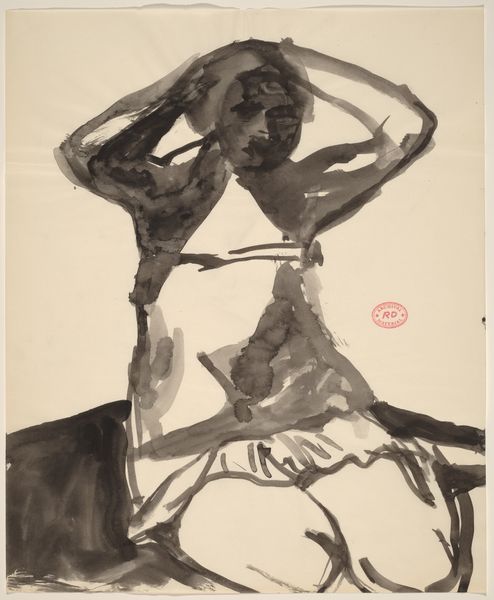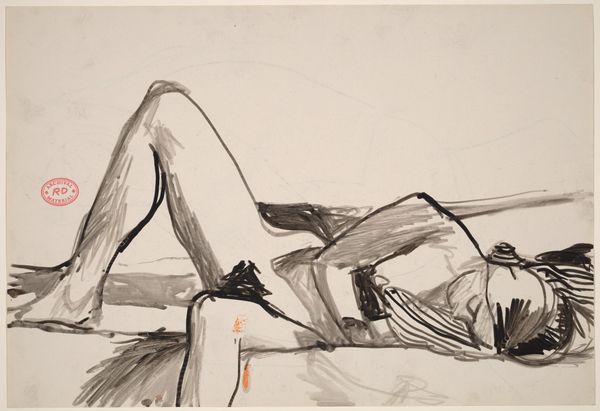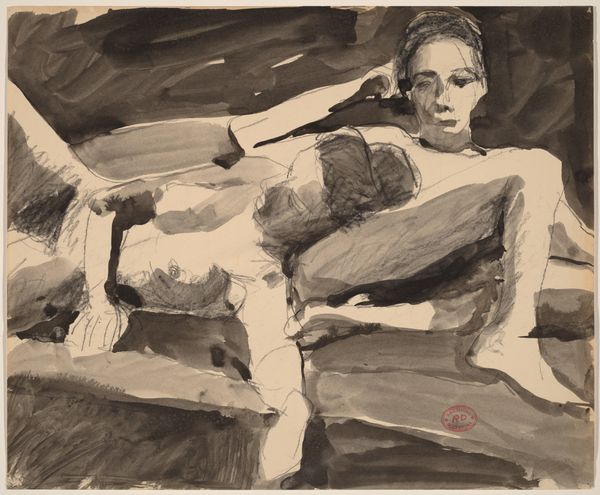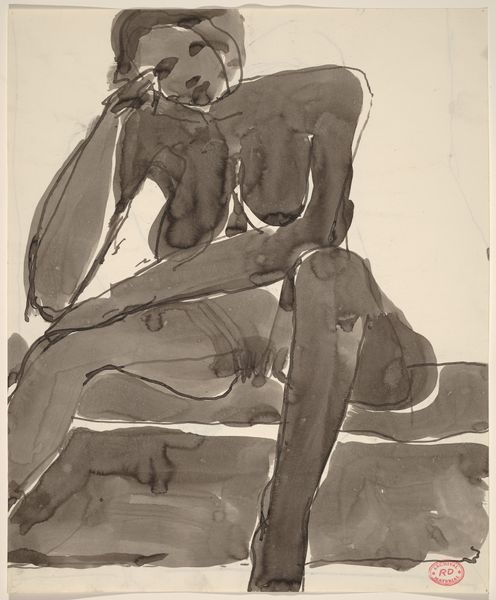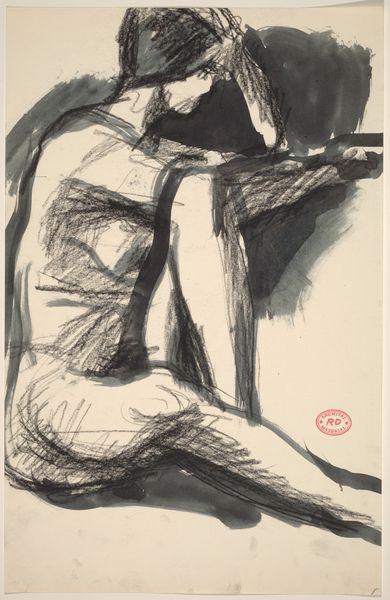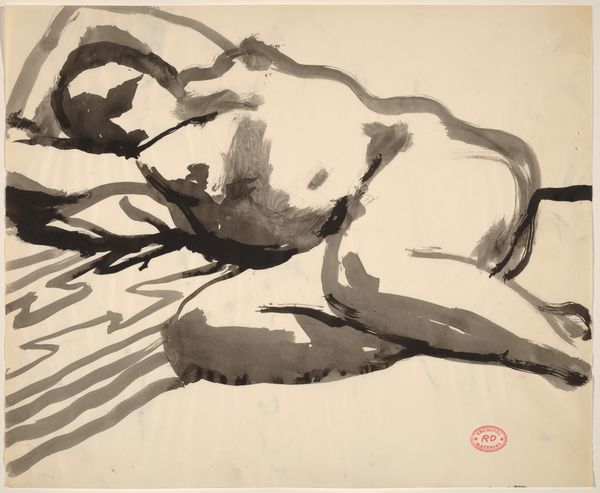![Untitled [male nude turned left] by Richard Diebenkorn](/_next/image?url=https%3A%2F%2Fd2w8kbdekdi1gv.cloudfront.net%2FeyJidWNrZXQiOiAiYXJ0ZXJhLWltYWdlcy1idWNrZXQiLCAia2V5IjogImFydHdvcmtzL2I0ZmUzNDFkLWYwYjItNGIwMi1iZThlLTViY2ZkMTZmOWI4ZS9iNGZlMzQxZC1mMGIyLTRiMDItYmU4ZS01YmNmZDE2ZjliOGVfZnVsbC5qcGciLCAiZWRpdHMiOiB7InJlc2l6ZSI6IHsid2lkdGgiOiAxOTIwLCAiaGVpZ2h0IjogMTkyMCwgImZpdCI6ICJpbnNpZGUifX19&w=3840&q=75)
drawing, ink
#
portrait
#
drawing
#
figuration
#
bay-area-figurative-movement
#
ink
#
nude
Dimensions: overall: 43.2 x 35.6 cm (17 x 14 in.)
Copyright: National Gallery of Art: CC0 1.0
Editor: This is an ink drawing by Richard Diebenkorn, "Untitled [male nude turned left]," created sometime between 1955 and 1967. I’m struck by the weight of the figure, the almost sculptural quality achieved with simple washes of ink. What stands out to you about this drawing? Curator: I’m fascinated by how Diebenkorn uses the inherent qualities of ink – its fluidity and its capacity for both delicate washes and dense blacks – to explore the body as a site of labor and materiality. Note the thick, almost gestural strokes used to define the contours. They speak to the process of creation, revealing the artist's hand and the physical act of making the artwork. How does that affect your interpretation of the male nude as a traditional subject matter? Editor: Well, usually a nude focuses on ideal form, but here the emphasis on process shifts it. The body isn’t just an object of beauty, it's... evidence of labor, both the model’s pose and Diebenkorn’s own work. Curator: Exactly! It subverts the historical conventions of representing the male nude, particularly the detached gaze associated with it. Diebenkorn isn't interested in idealized form; he is examining the raw materiality of the human form and its connection to the material world, drawing attention to both the physical body and his physical engagement with it through his mark making. Think about the social context: Post-war America, Abstract Expressionism… how might those inform his choices? Editor: That makes me think about how Abstract Expressionism also values process. It feels like he is bringing some of those concerns of materiality to figurative work. Thanks! This has definitely changed my perspective. Curator: And it has given me a new angle to think through. Thanks for sharing!
Comments
No comments
Be the first to comment and join the conversation on the ultimate creative platform.
